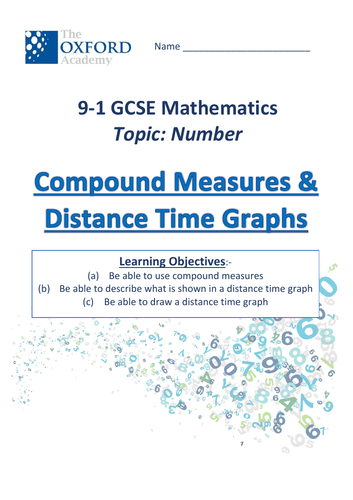
73Uploads
12k+Views
3k+Downloads
All resources

Mathematics Intervention: 7 - Fractions
I have created a series of 17 workbooklets to be used with low ability KS3 students.
They can be purchased individually, or all 17 (plus 2 x trackers) can be purchased as a bundle.
Excellent for interventions.

Mathematics Intervention: 4 - Negative Numbers
I have created a series of 17 workbooklets to be used with low ability KS3 students.
They can be purchased individually, or all 17 (plus 2 x trackers) can be purchased as a bundle.
Excellent for interventions.

Mathematics Intervention: 14 - Sequences
I have created a series of 17 workbooklets to be used with low ability KS3 students.
They can be purchased individually, or all 17 (plus 2 x trackers) can be purchased as a bundle.
Excellent for interventions.

AQA Entry Level Maths: Unit 1 Properties of Number
Unit 1: Properties of Number PPT
PPT which covers all the topics in Unit 1 of the AQA Entry Level Qualification (Level EL1 - ELC3)

Area & Perimeter of Regular & Composite Shapes
Learning Objectives:-
Calculate the perimeter of shapes
Calculate the areas of Rectangles, Triangles and Parallelograms
Calculate the areas of Trapeziums, Rhombus and Kites
Calculate the area of composite shapes

BTEC Tech Award in Creative Media: Component 1
A handbook and workbook for students to use for Component 1: Exploring Media Products.
It has activities which cover the learning aims for Component 1 preparing them for the first assessment task.

Angles & Constructions
Learning Objectives:-
Know angle types, label triangle sides and angles
Apply properties of quadrilaterals to know their names and find missing angles
Apply the properties of angles at a point, angles on a straight line, vertically opposite angles, alternate angles and corresponding angles
Use the standard ruler and compass constructions to construct a 60° angle, a perpendicular bisector, a perpendicular to a given line from/at a given point, and an angle bisector

Bearings & Maps
Learning Objectives:-
To find a bearing from A to B
To find a return bearing from B to A
To understand the points on a compass and the angles of each point
To use scale to work out distance from one bearing to another

Loci, Plans & Elevations
Learning Objectives:-
Use constructions to solve loci problems
Construct and interpret plans and elevations for 3-D shapes.

Circle Theorems
Learning Objectives: -
Apply and prove the standard circle theorems concerning angles, radii, tangents and chords, and use them to prove related results

Decimals & Standard Form
Learning Objectives:-
Understanding the place value of decimals
Multiply decimals using written methods
Divide decimals using written methods
Add and Subtract decimals using written methods
Rounding to decimal places or significant figures
Estimate Answers
Understand and use standard form for very large and very small numbers

Vectors & Transformations
Learning Objectives:-
How to generate a Vector, and Add and Subtract vectors
Consider transformations rotation, reflection, translation and enlargement (including fractional scale factors)

Compound Measure & Distance Time Graphs
Learning Objectives:-
(a) Be able to use compound measures
(b) Be able to describe what is shown in a distance time graph
© Be able to draw a distance time graph

Percentages
Learning Objectives:-
a) To understand how to use fractions to find percentages
b) Convert Fractions to Percentages
c) Find a percentage of an amount
d) Solve problems involving percentage increase and decrease
e) Simple and Compound Interest

Fractions
Learning Objectives:-
o Add and subtract fractions including improper fractions and mixed numbers.
o Multiply and Divide fractions




















